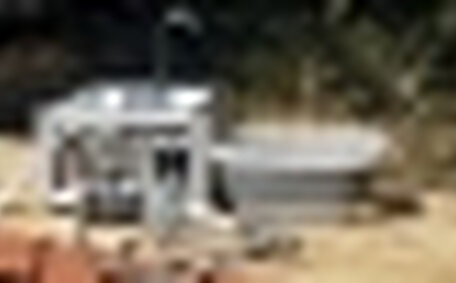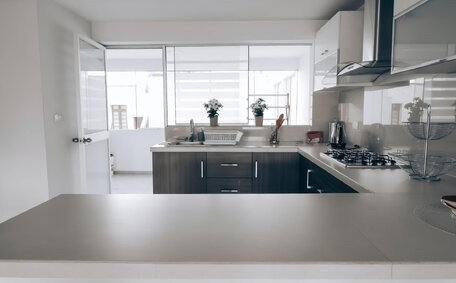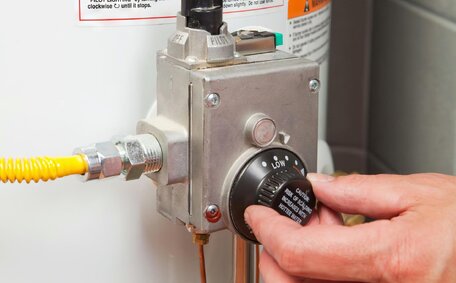Introduction to insulating hot water systems
Insulating your hot water system is a crucial but often overlooked way to improve energy efficiency and reduce costs. Hot water pipes and storage tanks can lose a significant amount of heat if not properly insulated, wasting energy and money.
Insulation acts as a barrier to heat loss, keeping the water in your pipes and tanks warmer for longer. This means your hot water system doesn’t need to work as hard to heat the water over and over. Installing insulation reduces heat loss through the tank and pipes, lowering energy bills in the process.
For households and businesses in Riverwood, Sydney, insulation should be seen as an essential component of any hot water system installation or upgrade. Proper insulation improves comfort by providing hotter water faster while also leading to long-term financial savings.
But how exactly does heat escape from hot water systems, and why is insulation such an effective solution? Read on to understand the concept of heat loss and why addressing it through insulation can benefit homes and businesses in your area.
Understanding heat loss in hot water systems
Heat loss occurs when heat transfers from a warmer object to a cooler surrounding environment. In your water system, heat loss happens through the storage tank and pipes carrying hot water.
Hot water naturally wants to reach temperature equilibrium with the air or environment around it. So when hot water sits in an uninsulated tank or travels through bare pipes, the heat dissipates outwards into the cooler air, walls, or ground.
Several key factors determine the rate of heat loss in a hot water system:
- Temperature difference - The bigger the gap between the hot water temperature and ambient air/environment temperature, the faster heat is lost
- Surface area - Tanks and pipes with larger surface areas lose more heat
- Material and construction - More conductive materials like metal lose heat quicker than less conductive materials
Insufficient insulation leads to problems like:
- Inability to maintain hot water temperature
- Increased reheating needs and higher energy bills
- Longer wait times for hot water delivery
Impact of heat loss
Allowing excessive heat loss from your hot water system can lead to major energy inefficiencies and increased costs over time.
As more heat dissipates from uninsulated tanks and pipes, your hot water system needs to work harder and longer to heat the water. This increased operation translates into higher energy bills as more gas or electricity is being consumed.
For a single household, hundreds of dollars per year could be wasted reheating hot water. When multiplied across numerous homes and businesses in an area like Riverwood, the financial and environmental impacts are substantial.
Higher fossil fuel usage ultimately leads to greater greenhouse gas emissions as well. By properly insulating hot water systems, Riverwood residents can do their part in reducing carbon footprints.
Taking action to insulate against heat loss leads to positive effects on both personal finances and environmental sustainability around Sydney’s local communities.
Measuring heat loss
Heat loss from hot water systems is commonly measured in degrees. Specifically, professionals examine the temperature drop that occurs in water between the storage tank and the output point.
They compare the hot water temperature at the tank to the final delivery temperature at taps or appliances. The greater the heat loss over distance and time, the more improvement is needed through insulation.
If water leaves your tank at 140°F but arrives at only 120°F at a bathroom faucet, that 20°F temperature drop indicates significant heat loss is occurring.
Quality insulation helps minimise this heat loss in pipes, aiming to keep output temperatures within 9-18°F of the tank’s temperature. With good insulation, you’ll enjoy hotter water faster while wasting less energy reheating.
Importance of insulation for energy efficiency
Installing proper insulation is one of the most impactful steps for improving energy efficiency in hot water systems. Insulation dramatically cuts down on unnecessary heat loss from tanks and pipes.
With less wasted heat, your hot water system requires less energy input to keep water at the right temperature. Reduced energy usage directly translates into lower utility bills each month.
It’s estimated that insulating electric and gas hot water systems can save homeowners 5-10% on their energy bills annually. For the average Sydney household, this could mean over $100 in annual savings.
Insulation also helps conserve water usage and reduces energy consumed for water heating. By preventing heat loss from pipes, less water is wasted waiting for hot water to arrive at faucets and showers.
All these factors demonstrate why insulation should be a top priority for any home or business looking to save on costs and environmental impact over the long term.
Insulation recommendations by system component
When it comes to insulation for hot water systems, there are three key areas that need attention to maximise energy efficiency:
Storage Tanks
Insulating your hot water storage tank is crucial to minimise standby heat losses. This insulation barrier can reduce heat loss by up to 45%. For the climate in Sydney, use insulation with an R-value of at least R-3.5.
Wrap your electric, gas, or solar tanks with an insulating blanket or jacket specifically designed for your water heater.
Pipes
Insure hot water pipes with preformed pipe insulation sleeves or high quality pipe lagging. Insure hot water pipes with preformed pipe insulation sleeves or high quality pipe lagging. The insulation traps heat to keep water hotter as it flows. For Sydney, use pipe insulation able to withstand temperatures of at least 140°F.
Valves/Fittings
Wrap pipe insulation around valves, tees, elbows, and fittings to prevent heat loss at pipe connections. You can use specific fitting covers or simply extend your pipe insulation to cover these heat loss points.
Following these insulation recommendations for your hot water system’s storage tank, pipes, and fittings helps minimise waste while maximising energy savings for Riverwood homes and businesses.
Storage tank insulation
Insulating your hot water storage tank is a crucial step for preventing unnecessary heat loss. Older hot water cylinders especially can leak significant warmth without insulation.
Start by purchasing a preformed insulating blanket or jacket designed specifically to fit standard water heater dimensions. Alternatively, you can wrap the tank in high quality insulation sheets, securing them with weatherproof tape.
Before installation, clean and insulate your storage tank exterior and ensure connections are easily accessible. Slide insulation around the tank, securing it according to the manufacturer’s instructions without blocking service panels or pipes.
Aim for at least 3.5 inches (90mm) of insulation thickness fitted snugly around the entire tank. This minimises convection currents and provides an optimal barrier to heat loss.
Protect the insulation with a weatherproof cover to prevent moisture damage over time. Maintaining water heater insulation improves efficiency and longevity.
Pipe insulation
Insulating hot water pipes is essential for preventing heat loss as water travels from the tank to output fixtures. Focus insulation efforts on pipes within 3 feet (1 metre) of the hot water heater, as this section loses heat most rapidly.
Start by cutting sections of preformed pipe insulation to size or wrapping pipes with flexible pipe lagging. Secure the insulation tightly using weatherproof tape so no gaps remain. Choose insulation with an R-value of at least R-3 designed to withstand temperatures around 140°F.
For tricky areas like bends and joints, use moulded insulation fittings. Extend pipe insulation through walls, attics, or other unheated areas pipes pass through to completely isolate heat flow.
Maintaining insulation thoroughness and integrity on hot water pipes enables efficient delivery of hot water while preventing wasted energy through heat loss to surrounding environments.
Valve insulation
Insulating valves is a vital yet often overlooked aspect of hot water system efficiency. Valves like pressure relief valves, stop valves, and tempering valves contain and regulate hot pressurised water. Without insulation, the metal valve body loses warmth to the air.
Start by sliding preformed valve insulation sleeves over valves near hot water heaters and solar tanks. Secure insulation snugly, eliminating air gaps where convection currents draw out heat. Alternatively, valve insulation tape or rope can wrap valves effectively.
Pay special attention to insulating the pressure and temperature relief (PTR) valve found near the top of most water heater tanks. The PTR valve releases excess heat and pressure to prevent dangerous buildups. Insulate this valve thoroughly while keeping the lever clear for emergency discharge.
Proper valve insulation improves system efficiency by reducing heat loss at crucial regulation points. Maintaining insulation on hot water valves enables effective system operation while maximising energy savings.
Choosing insulation materials
When selecting insulation for hot water tanks and pipes, three common materials to consider are polyethylene foam, neoprene foam, and fibreglass:
Polyethylene foam - This flexible plastic foam insulates efficiently and resists moisture. Easy to wrap around pipes and fittings. However, it degrades over time and has a lower R-value per inch than other insulations.
Neoprene foam - Very effective flexible foam insulation good for pipes. Withstands temperatures up to 200°F. More expensive than other options but offers good durability.
Fibreglass - Fibreglass batting or insulation sheets provide excellent heat retention at a budget-friendly price. Commonly used for wrapping tanks and insulating attics through which pipes run. Avoid skin contact with fibreglass during handling.
When purchasing insulation, verify it can withstand appropriate temperatures for hot water plumbing. Prioritise insulation with higher R-values for maximum efficiency. Proper installation also crucial for reducing heat loss.
DIY vs. professional insulation installation
Installing insulation on your hot water system can be done as a DIY project or by hiring a professional plumber. DIY installation may have lower upfront costs, but lacks expertise that professionals bring. Without proper training, DIY insulation risks being improperly fitted or subpar materials used, reducing efficiency gains.
Professionals properly assess needs, use quality materials, and ensure insulation withstands heat and humidity within code compliance. Their experience mounting tanks or navigating tight spaces also proves valuable. Insulation upgrades often qualify for rebates, offsetting some professional costs.
For complex needs or electric and gas systems, professional installation is advisable in Riverwood, Sydney. They guarantee insulation performance and can offer warranties against defects. Consider both convenience and long-term impacts when deciding between DIY and pro insulation.
DIY installation guide
Follow these steps for a DIY insulation installation on your hot water system’s exposed pipes and tank:
- Purchase appropriate insulation materials like preformed pipe sleeves, tank blankets, insulation tape, etc.
- Gather necessary tools - utility knife, tape measure, clamps, work gloves, safety glasses.
- Switch off hot water system power supply and allow components to fully cool before handling.
- Clean exterior surfaces to improve insulation adhesion.
- Take measurements and cut insulation to fit each component.
- Wrap tank completely using insulation blanket, securing tightly with weatherproof tape.
- Slide precut pipe sleeves over pipes, using insulation fittings for bends and joints.
- Ensure all insulation makes tight contact and air gaps are minimised.
- Maintain 3-6 inches insulation thickness for optimal heat retention.
- Protect installed insulation from direct weather exposure when possible.
Follow all safety procedures when working with hot water systems. Consult professionals if unsure about DIY insulation installation - improper methods can lead to efficiency losses.
When to hire a professional
It’s advisable to hire a professional plumber for hot water insulation installation when:
- You have an electric, gas, or solar hot water system requiring specialised knowledge
- Your home uses a recirculating hot water loop system
- The hot water unit has corrosion, leaks, or other issues present
- Accessing the pipes or tank would require dismantling built-in cabinetry/walls
- Insulation needs to meet strict building codes and efficiency standards
- Filing paperwork for rebates on insulation upgrades
With expertise in the latest materials and techniques, plumbers ensure insulation adheres properly and delivers maximum efficiency. They also guarantee compliance with Riverwood regulations, qualify you for rebates, and provide warranties for peace of mind.
Additional hot water efficiency tips
insulation, adopting smart usage habits and proper maintenance can improve hot water system efficiency in your Riverwood home or business.
- Set thermostats only as high as needed. Lower temperatures save energy unless safety requires 140F+.
- Insulate first 3 feet of cold water inlet pipe to reduce standby loss.
- Install heat traps on hot water tank inlet and outlet fittings.
- Choose energy-efficient system components when replacing water heaters.
- Routinely inspect components and repair leaks early to prevent waste.
- Consider installing timers, motion sensors, or high-efficiency fixtures.
Following insulation best practises while integrating these supplementary efficiency measures helps maximise energy savings over time for your hot water needs.






